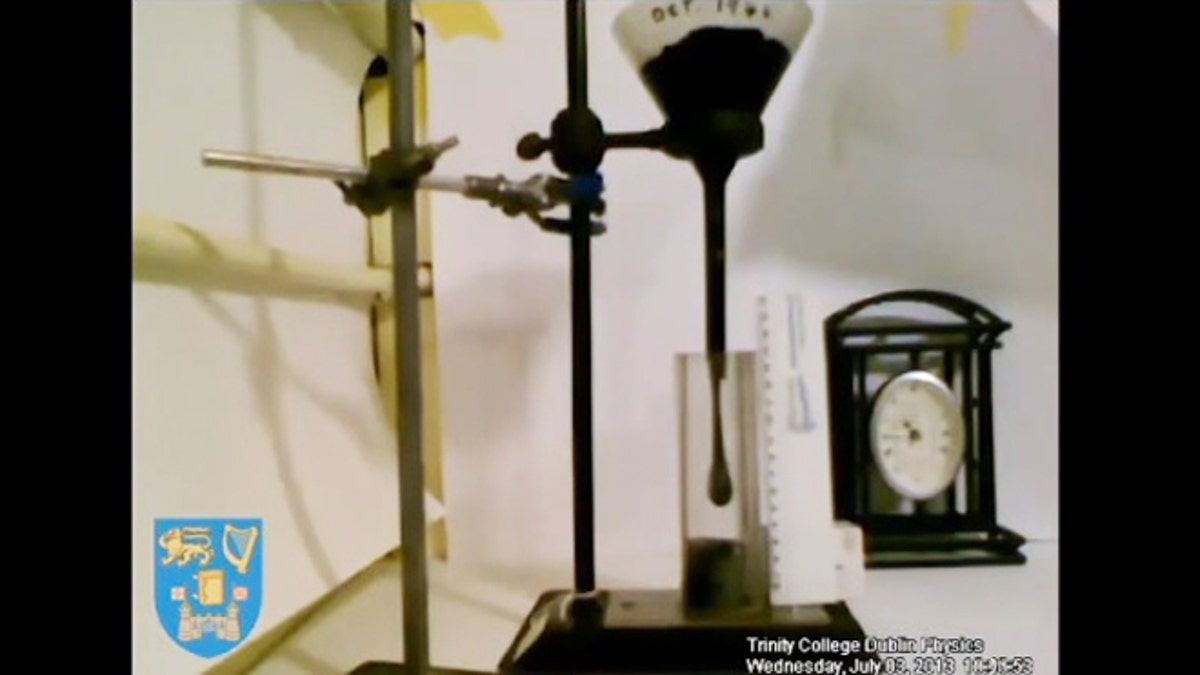
After 69 years, one of the longest-running laboratory investigations in the world has finally captured the fall of a drop of tar pitch on camera. (Trinity College Dublin)
It was 13 years in the making.
The second-longest running science experiment in history has just yielded its strange result: a sticky, black drop of pitch.
Set up in 1944 at Trinity College Dublin, the experiment is meant to reveal the strange properties of bitumen -- pitch, or asphalt -- which appears solid at room temperature but is in fact flowing very, very slowly.
At around 5 o'clock in the afternoon on July 11, physicist Shane Bergin and colleagues recorded what Nature described as one of the most eagerly anticipated and exhilarating drips in science.
“We were all so excited,” Bergin told Nature. “It’s been such a great talking point, with colleagues eager to investigate the mechanics of the break, and the viscosity of the pitch.”
The Trinity College team estimates the pitch to be about 2 million times more viscous than honey, or 20 billion times the viscosity of water.
The origin of the experiment is lost in history, although a similar experiment at the University of Queensland in Brisbane, set up in 1927, is tagged by Guinness World Records as the world’s longest running lab experiment.
